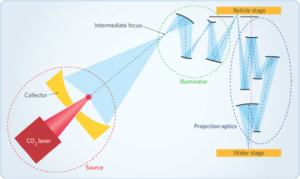Are you familiar with typical Setup RE6500 problems and how to fix them? Those of you for whom the answer is “NO” should read this post. You will be able to resolve them with ease after reading this post.
How Does A Linksys RE6500 Repeater Work?
An extender for dual-band WiFi is Linksys RE6500. One of the best networking tools for spreading WiFi signals throughout your entire house or office. It transmits the router’s WiFi signal back to the client. Users encounter a number of problems when setting up Linksys extender RE6500 though.
Having Trouble Joining The Linksys WiFi Extender?
The primary source of this problem is the incorrect placement of the Linksys extender. not just where to put an extender, but also where to put other equipment. Changing the position of your Linksys WiFi repeater is the only answer. When you relocate your Linksys WiFi, there are a few important considerations that you must make. Let’s examine them.
- Confirm that the repeater and router should be installed in the same room during the Linksys RE6500 setup.
- Just try to get rid of the metal objects that are blocking the extension.
- Check to make sure that the extension and router are not situated close to any metal objects that could interfere with the WiFi signal.
- Place your extension far enough away from concrete walls, windows, and corners.
- As a result, you can now fix this problem with a few simple actions.
Error Logging Into Linksys Extender
When setting up your WiFi extender with the Linksys RE6500. It’s necessary to type in 192.168.1.1 as the default IP address. You can set up and customize your Linksys WiFi extender using this IP address. The major time it occurs is when your extender is unable to connect to your router’s network because there is no internet connection between them.
To fix this problem, take the next actions:
- Make sure you enter the correct website address.
- Check that the computer is connected to the range extender RE6500.
- Your extension should be disconnected from the power source. Reconnect it later. The power cycle is another name for this procedure.
- The status of an extension can be determined by looking at the indicator light. It is possible that there is a connection, but it is not certain.
- Your web browser needs to be updated.
- Check to see if Linksys WiFi range extender RE6500 is running the most recent software version.
In some instances follow the steps below if you have a Linksys Velop gadget:
Using A Web Browser To Log Into Linksys Velop
- You can start a web browser by connecting an Ethernet wire to the setup device that is connected to the router’s LAN port.
- Enter “Linksys Velop” in the search bar to reach the browser’s default login page.
- Substituting the web address with your Linksys Velop router’s default IP address will allow you to access the Velop configuration page if you are unable to access the web address.
- Instead of typing the website’s address into your browser’s address box, try 192.168.1.1.
- Once the enter key is pressed, Linksys Velop will log you in. You will be asked for your default login information.
- Username-ADMIN from your Linksys Velop setup page should be entered on the following screen (Password-PASSWORD).
- To view the Dashboard or Basic Homepage of your Velop router, lastly, click the LOGIN tab.
With this method, you can set up a Linksys Velop router without the aid of an app. We’ll go through a few more essential ways to access your Linksys Velop dashboard panel as well. You can get in touch with our technical support staff whenever you need to if you’re experiencing problems login into your Linksys router. You can access your router straight now.
Note: Enter Linksys extender login into the Search window on your computer or laptop if you have a Linksys repeater and you want to alter any settings.
Connectivity Issues Due To Some Reasons
Another significant problem during Linksys WiFi extender setup. There are several causes for the erratic performance of your internet connection. Several of them have out-of-date firmware, have poor router signal connections, and experience interference from other WiFi devices. These are the simple measures you can take to address this problem.
Upgrade The Extender’s Firmware
You can solve issues with your internet connection disconnecting by using extender software that has been updated. Internet connections are lost by outdated software.
Make sure the most recent firmware version of your extender is compatible. If not, then the Linksys RE6500 extender’s software needs to be updated.
Extender Rebooting Automatically
If this approach doesn’t work to resolve the problem, you can force an extender to restart automatically. Automatic reboot refers to the Linksys WiFi range extender turning on and off. Wait a few seconds after shutting off your extension, then switch it back on after 30 seconds to check that the extender disconnection issue with your internet connection has been resolved.
Tip: This is the final but not least method to try if you’re still having trouble.
Resetting Your Linksys Extender
The simplest way to soft reset an extension is as follows:
- First, to reset the extender, you must either grab a tiny paper clip or hit the reset hole button on the extender’s rear.
- Avoid pressing the paper clip too firmly into the reset hole to avoid damaging your Linksys extension device.
- You’ll hear a sound that sounds like a bell for an additional 3 to 6 seconds.
- Your extender is then entirely reset after that.
- Check to check if your Linksys extender is functioning as it should by turning it on right now.
Note: The greatest solution to the internet’s disconnections is a soft reset. Your extender will prompt you to set up an extension once more after being reset. Visit the Linksys repeater configuration site and carefully follow the instructions if you want to know how to set up an extender properly.
After reading this blog, we hope your Linksys RE6500 setup process will be complete.





More Stories
Choosing Between Android and iOS for App Development
What Features Should I Look for in a Noise Smart Watch?
C# and the NET Framework: What’s the difference